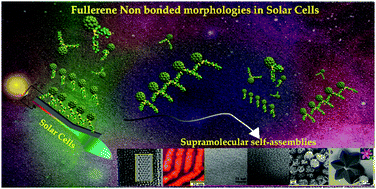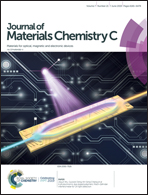Progress and development in structural and optoelectronic tunability of supramolecular nonbonded fullerene assemblies
Abstract
Assembly of fullerenes utilizing self-organization at solvent/non-solvent interfaces or by introducing hydrophobic(philic) end-groups have yielded diverse molecularly-ordered structures. Taking advantage of the multiple π–π interaction between adjacent C60-moieties, structurally elegant and functionally promising fullerene assemblies were synthesized by several groups over the last 20 years. Considerable improvement of device parameters is witnessed if non-covalent fullerene layers assembled using interfacial self assembly are used as electron extraction layer, for example in hybrid solar cells. Thus a pre-determined choice of C60-nanostructures for photovoltaic application stems from an understanding of fullerene–fullerene interaction, a priori from the molecular level. Could we eventually define the outcomes of the last three decades of fullerene aggregation chemistry? This review summarises the course of understanding of optoelectronic properties of fullerene-morphologies, bridging the gap between single molecule and device scale which shall be significant for their judicious implementation in molecular electronics.

- This article is part of the themed collection: Recent Review Articles


 Please wait while we load your content...
Please wait while we load your content...